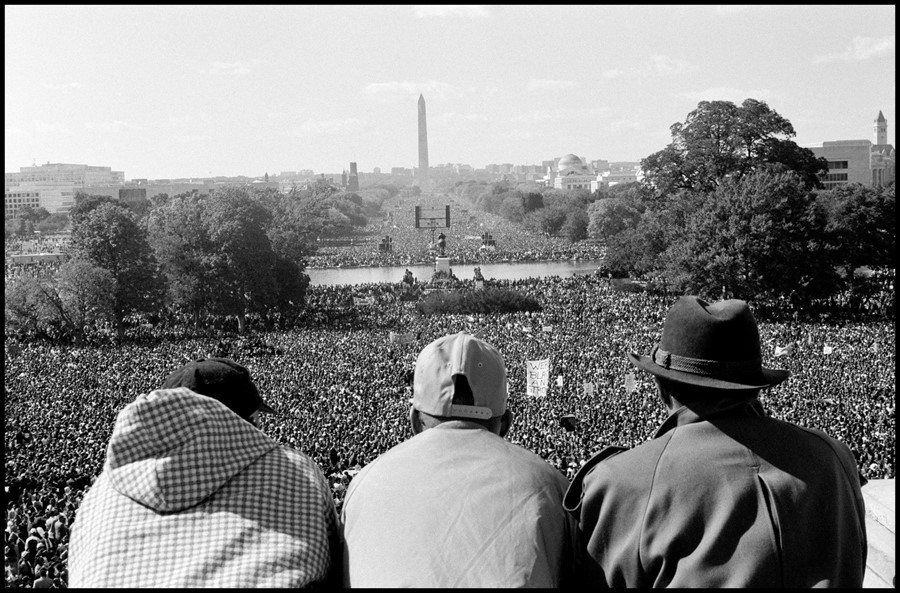“They came by airplane, bus, train, car, and foot.” Magnum photographer Eli Reed’s powerful snapshot marked a change in pace for the civil rights movement
“The Million Man March took place on October 16, 1995, in Washington, DC, on and around the National Mall,” says American photographer Eli Reed, describing a photograph entitled The Million Man March that he took on that occasion. “There, African-American men came together from all over the US to collectively take a positive stance toward addressing the problems of their at-risk communities.” The prolific one-day demonstration was organised by religious leader Louis Farrakhan, a prominent figure in the Nation of Islam, in response to widespread feeling that the black community was being failed by the US government’s political agenda. Alongside Farrakhan – whose views on race and religion have courted controversy over the years – Rosa Parks, Martin Luther King III and Maya Angelou were among those who spoke at the march. Reed’s now-iconic image is an example of a multitude of journeys represented in one photograph, both literal and metaphorical.
A photojournalist with an extensive oeuvre, Reed’s practice and career has taken him to many corners of the earth, from his birthplace in New Jersey to locations including Guatemala, Beirut and Hong Kong, to document news and social issues. One of his longest-standing subjects is the lives of African-Americans, notably immortalised in his photo-book Black in America (1997) which comprises photographs taken over a 20-year period from the 1970s to the 1990s.
Reed offers a singular viewpoint of the 1995 march, from behind three men who are looking out across the gargantuan crowd extending before them, the Washington Monument standing tall on the horizon in the distance. The viewpoint from a height serves to emphasise both the sheer scale of the gathering and the prescient sense of action and anticipation that the march inspired. “They came by airplane, bus, train, car, and foot; it was a call to the world at large that action had to be made to make our shared world a better place,” explains Reed. “They came to heal the negativity that continues to separate us.”
“They came by airplane, bus, train, car, and foot; it was a call to the world at large that action had to be made to make our shared world a better place. They came to heal the negativity that continues to separate us” – Eli Reed
It’s this very notion – one of journeys both literal and metaphorical – that forms the crux of this week’s Magnum Square Print Sale, Great Journeys, the last in the photography cooperative’s cycle of four sales each taking on a theme associated with one of its founders. Great Journeys is inspired by the extensive travelling undertaken by co-founder George Rodger, and sees over 100 images available to buy until Friday. Over the course of his lifetime, Rodger journeyed extensively in search of subjects that might provide hope or fulfillment to viewers during the second half of the 20th century, after having photographed harrowing events during World War Two, an experience he found particularly affecting.
Great Journeys brings together images produced with this ethos in mind. The voyages represented are both literal and figurative, and Magnum’s sale is evidence of travel’s significance within the realm of photography, be that mighty physical undertakings or immense emotional movements. What’s more, 2017 marks not only the 70th anniversary of Magnum, but 65 years of the Aperture Foundation; thus Great Journeys is for the first time a joining forces of the two photography giants, with prints by both Magnum and Aperture-published photographers feature in the sale.
Great Journeys, Magnum’s Square Print Sale in Partnership with Aperture, runs until November 3, 2017.
